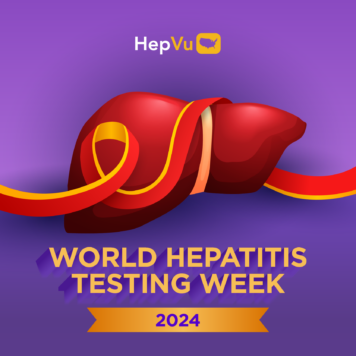Dr. Eli Rosenberg is an Assistant Professor at Emory University’s Rollins School of Public Health in the Department of Epidemiology. He is also the Principal Investigator for Emory University’s Coalition for Applied Modeling for Prevention (CAMP).
Viral hepatitis is a burgeoning public health epidemic. Since 2012, deaths associated with Hepatitis C in the U.S. have surpassed the total combined number of deaths from 60 other reportable infectious diseases. It is estimated that 2.7 million people are infected with chronic Hepatitis C, but less than half of those infected are aware of their status. And, for Hepatitis B, an estimated 850,000 to 2.2 million people are living with chronic infection in the U.S.

While the Centers for Disease Control and Prevention has routinely published national-level estimates for Hepatitis C using the US National Health and Nutrition Examination Survey (NHANES), until now, standardized state-level estimates of Hepatitis C infection rates have been unknown. This is especially concerning considering the key role that states play in supporting Hepatitis C prevention, diagnosis, and treatment services. With funding from the CDC, my team at Emory University’s Coalition for Applied Modeling for Prevention (CAMP) set out to address this data gap, and the findings from our work were recently published in the journal Clinical Infectious Diseases.
The paper, “Estimation of State-Level Prevalence of Hepatitis C Virus Infection, US States and District of Columbia, 2010,” outlines the application of a statistical model that estimates how many people in each state are living with HCV antibodies. Developing state-level Hepatitis C antibody prevalence estimates can help policy makers, public health professionals and advocates gain a better understanding of the epidemic and of the best ways to use information in the fight to eliminate the disease.
However, establishing actual Hepatitis C rates at the state level has been held back by limited epidemiological data. The surveillance system for Hepatitis C is not as comprehensive as it is for other infectious diseases like HIV. So until more detailed public health information about Hepatitis C is available, we have to use statistical models to get a clearer picture of how many people might need services related to Hepatitis C in each state.
We used a variety of data sources to develop the first standardized state-level estimates of people living with past or current Hepatitis C. Data about how many people have evidence of Hepatitis C infection came from the NHANES survey, which is an annual study in the U.S. that collects blood samples and conducts laboratory tests to detect past infection with Hepatitis C. To determine how many people with evidence of Hepatitis C infection live in each state, a second dataset, the National Vital Statistics System (NVSS), was used because it reveals whether some states had more or less Hepatitis C-related deaths than others. Finally, because Hepatitis C is more common in certain U.S. demographic sub-populations (e.g., black male baby boomers), the U.S. Census was used to help us understand the distribution of sex, age, and race/ethnicity of people across states.

Leveraging the different data allowed us to develop a new set of values for the number of people living with evidence of Hepatitis C infection in each state. Statistical models are not perfect. For example, our model doesn’t fully include people who live in institutional settings, like prisons and jails, and homeless people – all populations with higher than average rates of Hepatitis C infection. However, despite these limitations, we now have a much clearer picture of what the Hepatitis C epidemic looks like at the state-level and which states and regions are most affected.
Overall, we estimated that 3.9 million Americans have antibodies to Hepatitis C. Antibodies to HCV indicate past or current HCV infection; some people exposed to Hepatitis C clear the virus from their bodies, but still have antibody evidence of past infection. Our HCV prevalence estimates are based on the number of people who have this antibody evidence of exposure to Hepatitis C, because this is the most inclusive indicator of the reach of the epidemic and informs public health strategies to address the epidemic.
I am especially excited that these data will be visualized on HepVu.org, a new interactive website presented to you by the same team behind AIDSVu.org. We hope that advocates, policy makers, and health care providers use this data and information on HepVu to better meet the needs of their communities, constituents, and patients. Everyone can do their part by learning more about Hepatitis C where they live, at www.HepVu.org.



